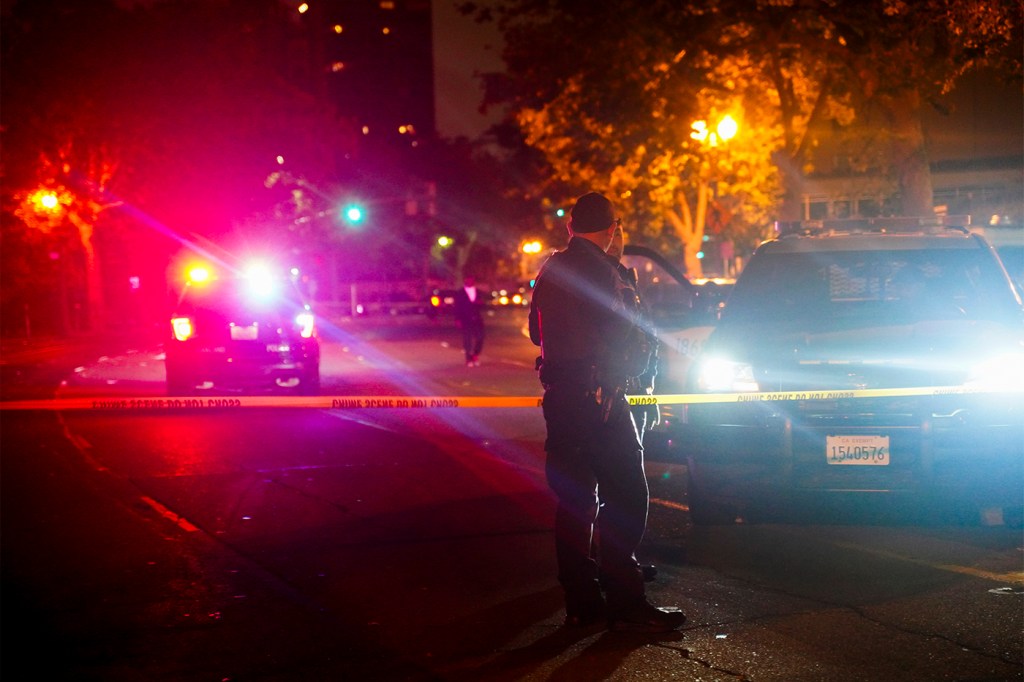Published on
US homicides and violent crime overall are down significantly, according to FBI data
Northeastern criminologist James Alan Fox says U.S. murders have been on the decrease for three decades — and Americans are generally not aware of the trend.

The U.S. is experiencing a significant decline nationally in homicides, according to FBI data.
Murder rates are also falling in many large cities, including Boston, which saw the largest drop of any major U.S. city in the first three months of 2024.
As of June 10, Boston police reported four homicides in the city this year, compared to 18 at the same time one year ago.
The descending numbers are not an aberration, says Northeastern University criminologist James Alan Fox, who notes that U.S. murders have been on the decrease for three decades. And yet Americans are generally not aware of the trend, he says.
“National Gun Violence Awareness Month [currently ongoing] is an appropriate time for the public to become aware of the improvement,” says Fox, who has been studying murder for four decades. “But the word isn’t getting out.”
Homicides throughout the U.S. decreased by 26.4% overall in the first quarter of 2024, according to the FBI data, which was released on June 10. Violent crimes overall — including rapes, aggravated assaults and robberies — dropped by more than 15% in that span.
Fox says the murder rate in Boston is lower than most major U.S. cities for several reasons, including:
- Massachusetts’ gun-ownership rate of 14%, which is the lowest in the U.S. and is complemented by some of the nation’s strongest gun laws.
- A relatively cool climate. (Fox’s research shows that crime tends to spike in hot weather.)
- A high number of emergency rooms and trauma centers in the city.

“It’s also true that Massachusetts has the highest percentage of well-educated people in the country,” adds Fox, the Lipman Family Professor of Criminology, Law and Public Policy at Northeastern. “Educated people have been found to be less likely to commit homicide.”Jacob Stowell, a Northeastern associate professor of criminology and criminal justice, also credits Boston Mayor Michelle Wu for emphasizing crime reduction.
“There has been a lot more community involvement — a lot more stakeholders and folks at the table who should have been at the table for a long time,” Stowell says. “When you see big reductions like this, it’s the result of a confluence of factors, any one of which would be beneficial, which are operating in concert.”
Those factors are emerging in neighboring cities, Stowell adds.
“Nationally, the Northeast is outpacing all of the other regions in the reduction,” Stowell says. “So there is definitely something involved here that’s not just Boston-related but may be Northeast-driven.”
Editor’s Picks
Fox and Stowell anticipate the murder rate will climb this summer as temperatures rise and young people are let out of school. Even so, both experts anticipate Boston homicides will show a decline overall this year from the historic low of 37 murders committed in 2023.
“We’re averaging far fewer murders in Boston than in the early 1990s, when there were 152 in one year,” Fox says.
U.S. crime promises to be a significant issue in the November presidential election. A Gallup poll in November found that 63% of Americans describe the crime problem in the U.S. as either extremely or very serious, up from 54% when last measured in 2021.
Fox says murder rate increases tend to receive more media coverage than the current decreases are earning.
“You know the saying, ‘no news is good news?’” Fox says. “It turns out that good news is no news. And bad news is big news.”
Fox says media coverage of decreasing crime would help “calm some of the public fear.”
“There’s a tremendous amount of fear,” he says.
No public mass killings in 2024
In another telling indicator, U.S. mass killings are also on the decline. In 2024, there have been 11 mass shootings resulting in four or more deaths — a reduction of more than 50% compared to last year.There have been no mass killings in a public setting this year, according to the Associated Press/USA TODAY/Northeastern University Mass Killings Database, the most extensive data source on the subject. The last public mass killing took place in October in Lewiston, Maine, where a man killed 18 people at a bowling alley and a restaurant.
“The average of public mass killings in the U.S. is about six per year, so I am convinced that we’ll have a decline overall for 2024,” says Fox, who presides over the mass killings database. “But there’s been virtually no media reports on this.
“Last year in March there was a 2% increase [in mass killings] and I saw a lot of coverage of that in newspapers and on television — that it was increasing,” Fox says. “But now that there’s a big decrease? Silence.”
‘A uniquely American phenomenon’
Fox says violent crime in the U.S. peaked during the early 1990s amid the epidemic of crack cocaine.
“That spike was driven by crack,” Fox says. “At that time kids were recruited to sell crack because of the perception that if they were arrested as minors, nothing really bad would happen to them.”
Fox says a waning market for crack cocaine precipitated the ongoing, long-term descent of murder rates. Fox notes that the three-decade trend has been marked by a few aberrations — most recently in 2020, when a 30% increase in U.S. homicides was driven by the disruptions and anxieties of the COVID-19 pandemic.
“Since then we’ve seen a downward slide,” Fox says. “It’s technically referred to as regression to the mean. But I prefer to call it criminological gravity: What goes up, must come down.”
Fox and Stowell stress the necessity of recognizing the improving climate while also emphasizing the larger concerns of U.S. gun violence.
“Even though homicide numbers are down, we still have a gun homicide rate that’s higher than the overall homicide rate of the other Western countries,” Fox says.
“Firearm-involved homicide is a uniquely American phenomenon,” Stowell adds.
Fox views public fear as a casualty of the American gun problem. He says information and perspective can help combat that fear. One area of focus for Fox is the issue of school shootings.
The K-12 School Shooting Database shows a U.S. record 348 shootings at schools in 2023, he notes.
“But only 9% of those shootings happened inside the school,” Fox says. “And over 70% percent of fatal shootings since 2010 have happened at nighttime, on the weekends or during the summer when schools are closed.”
A Gallup survey last summer showed that 38% of parents of school-age children feared for their child’s physical safety while at school, which is one of the highest readings since 1977.
“In fact, the average number of students who are killed in school by an assailant is seven per year,” Fox says.
By comparison, 26 schoolchildren are killed annually in accidents while commuting to school, he says.
“Every school shooting is a tragedy, and one school shooting is one too many,” Fox says. “But parents have this fear of their kid sitting in the classroom and the gunman comes in and does the shooting — and then they see 348 shootings in a year at school and it strikes at their worst fear.
“When in fact most of these shootings didn’t happen in school,” Fox says. “A gun fired on school property is different than a school shooting.”
Ian Thomsen is a Northeastern Global News features writer. Email him at i.thomsen@northeastern.edu. Follow him on X/Twitter @IanatNU.











